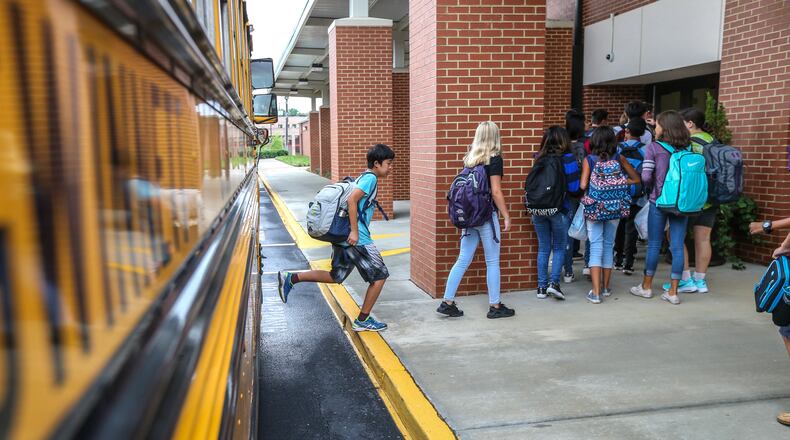Gwinnett County Public Schools’ proposed budget for the upcoming fiscal year is shaping up to be nearly $48 million less than the current budget.
That’s largely because the district has spent some of its federal pandemic funds, reducing the amount available for the upcoming budget.
District staff presented the budget proposal to the school board Monday. The proposal totals $2.8 billion and would take effect July 1, if approved.
The budget’s general fund, which covers most operating costs, would increase by $58.5 million. It’s slated to pay for employee raises, new jobs, pre-K programs and a revamped reading curriculum.
The district is not proposing any changes to the millage rate, but local tax revenue is expected to increase because of higher property assessments. The state, which provides most of the general fund, will increase its contribution by $31 million.
Under the proposed budget, all teachers, except the highest earners, and 43% of other employees would receive a raise through a salary step increase. Teachers would also get a $2,000 cost-of-living raise.
Other employees would receive a cost-of-living raise of at least 4%. Joe Heffron, the district’s chief financial officer, said the district’s minimum wage would be set at $13.50 per hour. About 600 employees are below that threshold, with some earning as little as $9 per hour.
Within a year or two, the district wants to bump the minimum wage to $15 per hour, he said.
Heffron said an anticipated enrollment increase of more than 3,000 students and the opening of Seckinger High School necessitate filling 233 new positions. The district is also hiring 182 teachers to reduce class sizes.
One new initiative in the proposal is a pilot pre-K program at eight schools for 256 students. Gwinnett’s in-school pre-K is now exclusively for special needs students. Pre-K programs for other students are often based in churches and day cares.
To meet the high demand for pre-K programs, the district would need more than 3,000 slots in schools, said Deputy Superintendent Nakia Towns.
Board member Everton Blair asked for more details on the district’s plans for addressing pandemic learning loss. The district has used federal COVID-19 relief funds to enhance summer school and implement a tutoring program.
Towns said the district is expanding after-school and weekend opportunities. It’s also adjusting its spending plan for its remaining federal pandemic funds. She said there may be $25 million available for learning loss because the district spent less than expected on protective equipment.
“I really want to make sure this is as accessible as possible,” Blair said. “Whether it be transportation issues that might prevent them from being able to access an after-school or Saturday or summertime opportunity, just making sure we are using the money we have to meet the student needs is a priority of mine.”
Other initiatives in the budget proposal include starting work on a new middle school in the Archer cluster and using federal pandemic funds to purchase more computers so that every student can take a device home from school.
The board will have a second budget meeting on April 14, where they could take a preliminary vote on the budget. The board will then hold public hearings on May 19 and June 16, during which people can comment about the budget. Final adoption is slated for June 16.
About the Author
Keep Reading
The Latest
Featured


